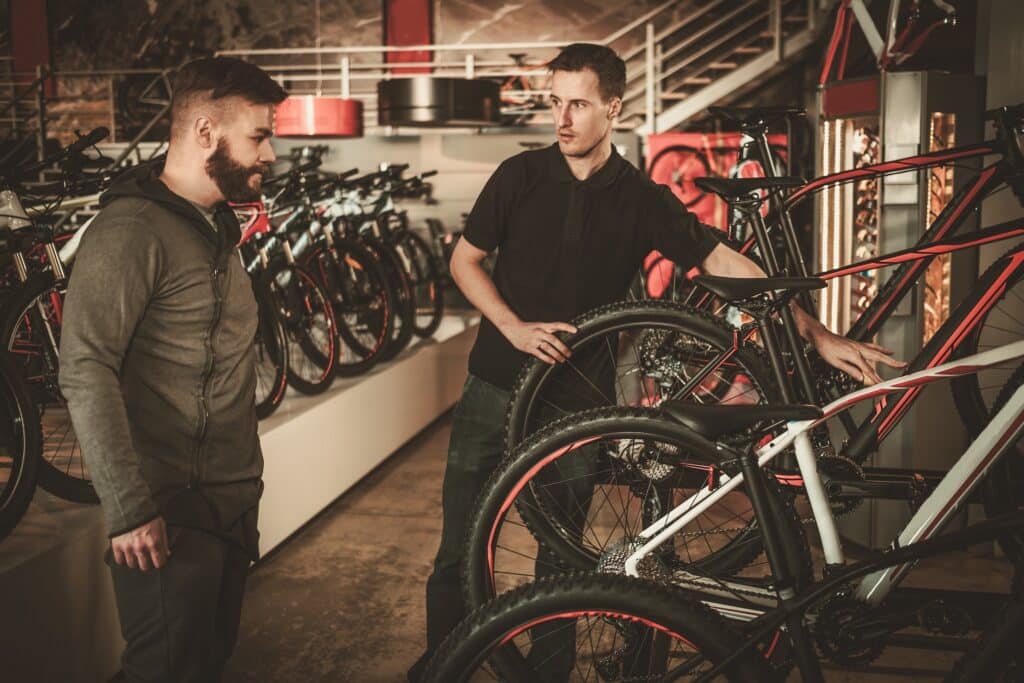There’s no denying that mountain biking can be tough on the body, but it doesn’t have to be uncomfortable. If you’re experiencing aches, pains, or just a lack of control, it might not be your riding technique. There’s a good chance that you could just be riding a bike that doesn’t have the right fit (despite what the online size chart might say).
In this blog, we’ll break down why fit matters more than the brand and discuss how a visit to your local Denver bike shop can help set things straight.
What a Bad Mountain Bike Fit Does to Your Body
Mountain bikes aren’t like cruisers or commuters. Their geometry is aggressive, the suspension sags, and things like dropper posts and handlebar width add complexity. Without a proper fit, even experienced riders can end up with a slew of aches and pains.
Here are some of the most common reasons why a poor-fitting bike will bring the pain.
- Saddle Height & Position: Too low, and your knees stay overly bent, which leads to joint strain and fatigue. Too high, and you may overextend at the bottom of your pedal stroke, causing hips to rock or knees to flare. Slide the saddle too far forward? That shifts more pressure to the kneecap and can disrupt your pedal efficiency.
- Handlebar Reach & Height: If the reach to your handlebars is too long, your back and shoulders have to overcompensate. You end up riding stretched out, which can cause lower back pain and tension between the shoulder blades. Too low, and your weight tips forward, putting pressure on your wrists and reducing your control on descents.
- Stem Length & Angle: A long stem can exaggerate an already stretched posture, while an extreme stem angle can tilt you too far forward or upright, throwing off your weight distribution. Small changes here make a big difference in both comfort and handling.
- Grips & Bar Width: Handlebars that are too wide (or too narrow) for your shoulder width can strain your upper back and arms. Meanwhile, the wrong grip diameter or shape can lead to hand fatigue, numb fingers, or wrist discomfort over longer rides.
- Pedal & Cleat Position (If Clipped In): Even small misalignments in cleat angle or fore-aft positioning can create tension in your knees and hips. Proper alignment here ensures your joints move in their natural range with each pedal stroke.
How a Good Shop Helps You Find Your Fit
Big box stores don’t care about setting you up in the same way that mountain bike retailers do. They just care about getting another sale out the door. A local bike shop like Base Camp Cyclery takes the opposite approach. Instead of churning through customers, we take our time to make sure everything lines up.
It starts with a conversation. We’ll ask where you ride, what your style is, and how your current bike feels. Then we’ll adjust things like:
- Saddle height and angle
- Handlebar width and stem length
- Suspension setup and sag
- Grips and contact points
We often let riders test a few bikes and tweak the fit until it feels right. Sometimes that means moving up or down a size. Other times, small adjustments make a big difference. A rider who’s 5’9”, for example, might find that a large-size Santa Cruz gives them better reach and control than a medium from another brand.
Why Online Size Charts Fall Short
Online sizing tools can be a helpful starting point, but they don’t know you. They don’t know if you have long legs and a short torso. They don’t know if you’re hitting 20-mile climbs or rolling singletrack with your kid on a tow strap. They rely on a single input, usually your height, and ignore all the other variables.
It takes a trained eye and real-world experience to get the perfect match, so fitting should always be done in person. When you visit a Denver bike shop for a professional fitting, they’ll make sure to account for the following factors:
- Riding Style: A more upright position can help with control and power on steep climbs, while a stretched-out posture might feel better on smooth, fast trails. Online charts can’t account for those nuances.
- Brand Variations: A medium trail bike from Ibis might feel completely different from a medium from Orbea, even before you factor in stem length, bar width, or suspension setup. Those variations in reach, stack, and wheelbase can dramatically change how a bike handles.
- Intended Use: Cross-country bikes are built for efficiency, often with longer reaches and steeper angles. Downhill rigs are more compact and stable to keep you centered on steep descents. What “good fit” means depends on how and where you ride.
Personalized Mountain Bike Fitting in Denver
No matter what you choose to ride, the right setup is what makes the difference. A bike that fits well feels intuitive, like an extension of your body. It gives you confidence on the trail and keeps you comfortable for hours.
From parents shopping for their kid’s first real bike and weekend warriors trying to cure hand numbness to longtime riders chasing the perfect build, the team at Base Camp Cyclery has helped riders of every kind. Sure, their experience sets them apart, but they all share a common need: they want a bike that feels like theirs.
If you’ve ever walked into a shop and felt overwhelmed, rushed, or dismissed, we get it. That’s not how we do things here. We’ll listen, walk through options, and take the time to get your setup dialed. No pressure. No upsell. Just real help from people who ride.

